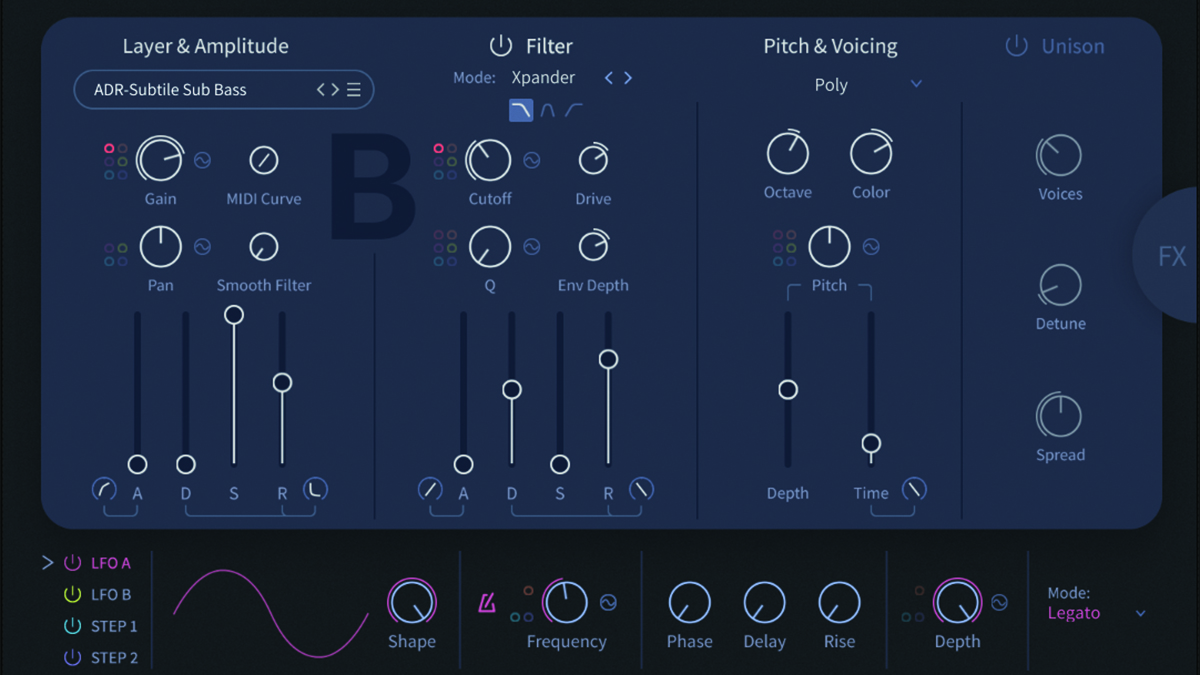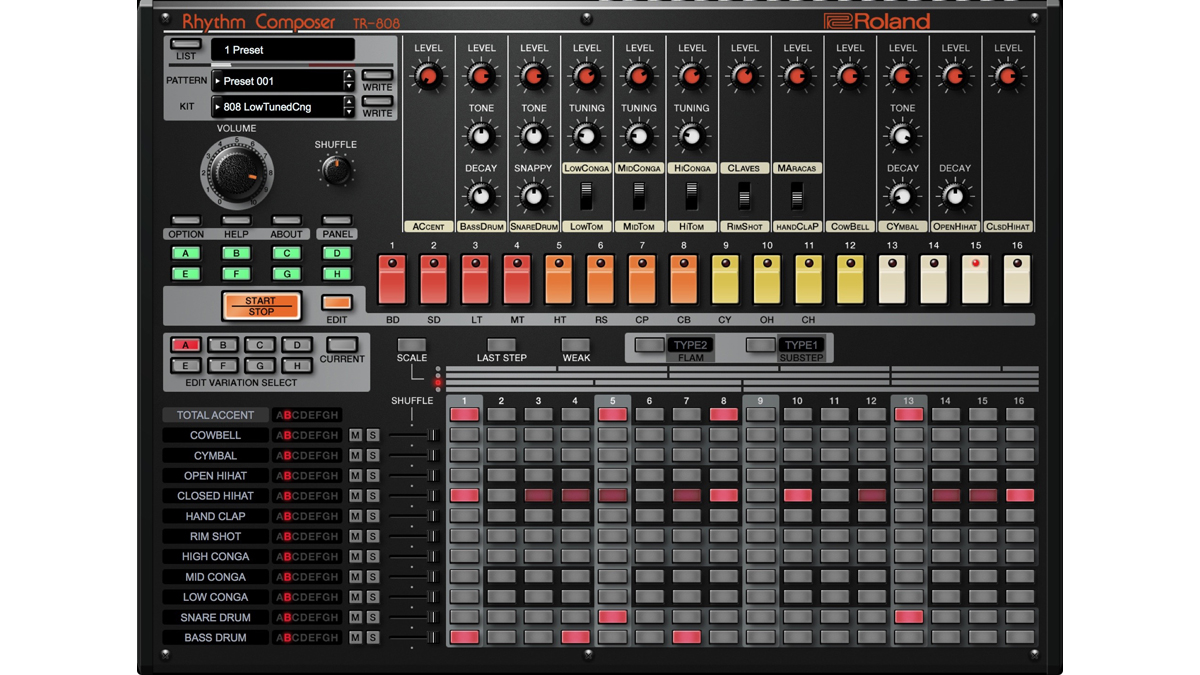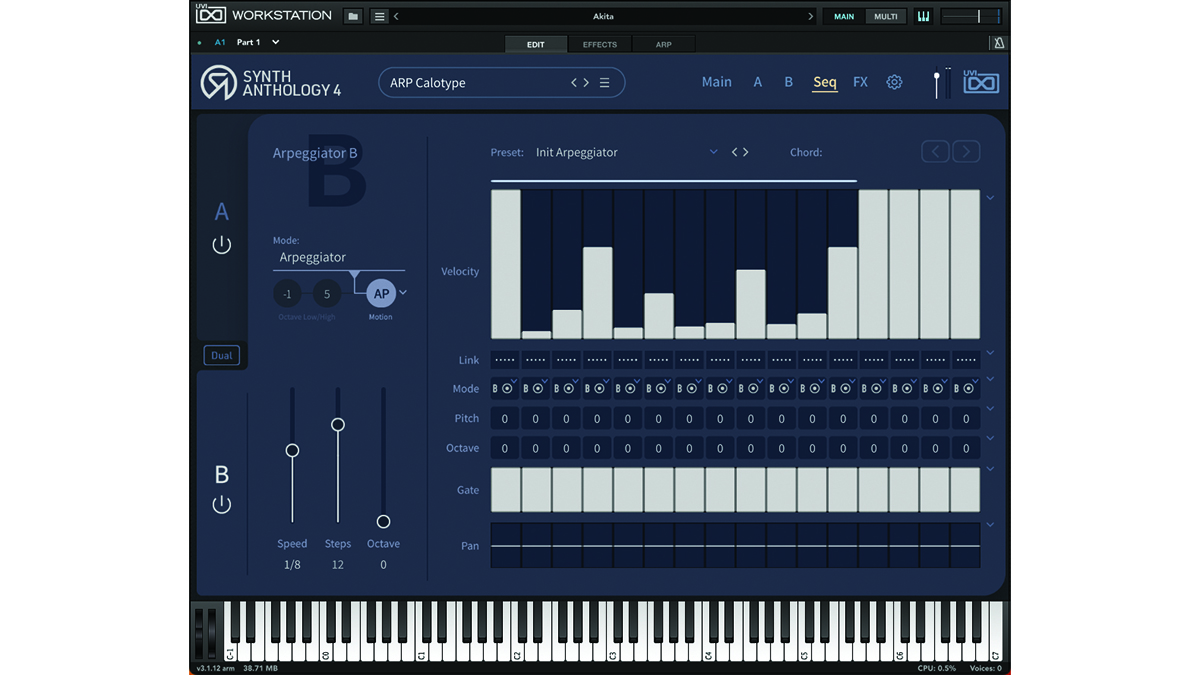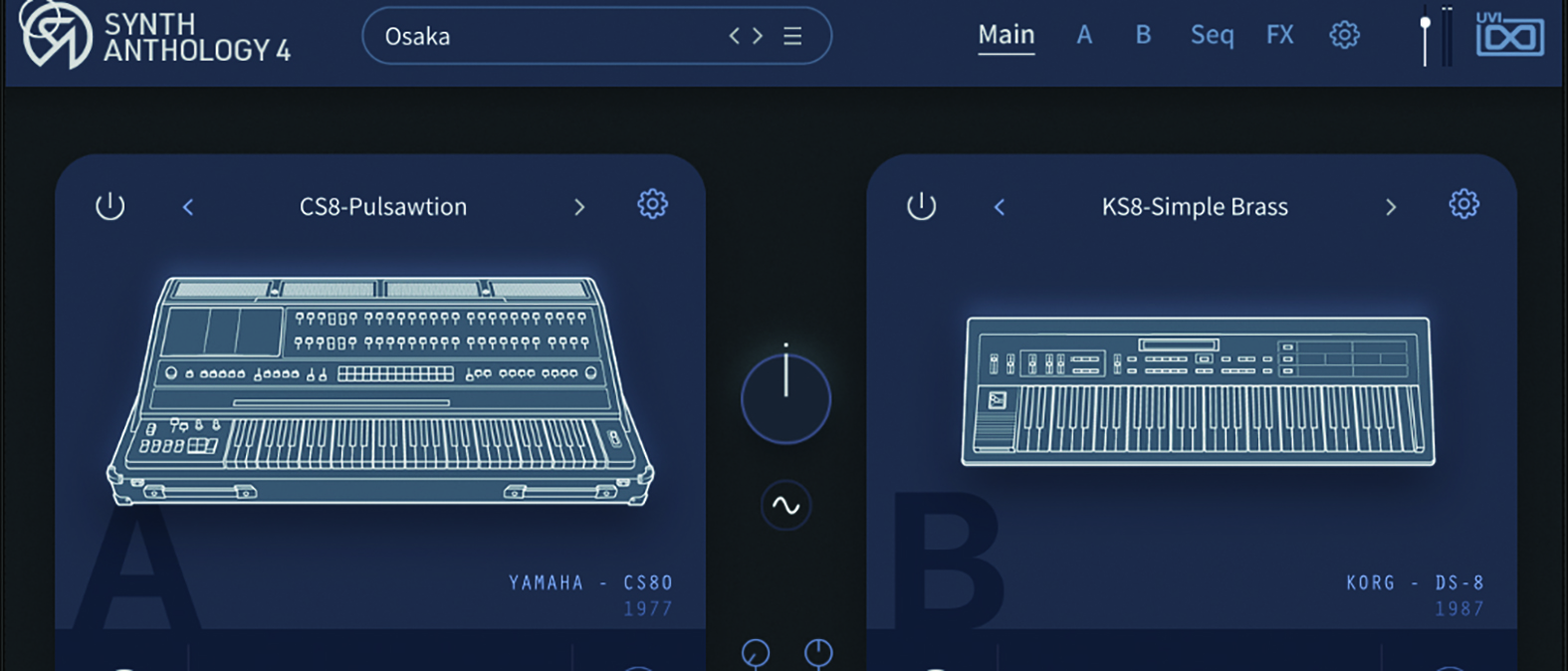MusicRadar Verdict
It’s like having the greatest hits of synths on speed-dial, in a simple package, which sounds quite amazing across the board.
Pros
- +
Enormous collection of very worthy synths.
- +
Extensive bank of very usable patches.
- +
Beautiful new-look GUI.
- +
Sonically, this suite is a cut above.
Cons
- -
It’s a sampled library, so you don’t get the original filters
MusicRadar's got your back
UVI Synth Anthology 4: What is it?
We all know that hardware synthesizers can be a costly alternative to their software counterparts, albeit with the tactile joy, but imagine a compendium of classics that could satisfy your synth-gear lust in one convenient and cost-effective package.
Well, you needn’t imagine any further. UVI’s newest release and update to its applauded Synth Anthology series has risen to version 4, but this is no minor release with a few tweaks here and there. Apart from a smart new look, there’s a wealth of additions and improvements that add up to a package which feels to be far more than a sum of its parts.
Firstly, a bit of background. UVI has an excellent track record for creating sample-based software instruments, which operate from within its own plugins. UVI’s freebie Workstation plugin is the basic host software, presenting the information in a style which always feels uncluttered. This is exemplified with SA4, as the interface graphics have received a makeover, revealing a stunning new look. You can also use UVI’s Falcon softsynth plugin as host, which does open up a greater number of options at the programming level, but for our money, the clarity provided by Workstation is a thing to savour, as well as being free.

UVI Synth Anthology 4: Performance and verdict
Because this is a sample-based suite, it does mean that we’re at the mercy of the supplied content, which is both plentiful and extensive.

• Roland Cloud
Some of the finest modelled software clones on the market.
• UVI Vintage Vault 4
UVI’s entire vintage synth-sampled catalogue, with over 255 machines.
The sounds are drawn from a bewildering array of hardware machines, ranging from classic analogues from the likes of Moog, Roland and EMS, to virtual analogues such as the Access Virus, and even samplers from Akai and the legendary Fairlight CMI. Over 200 machines have been sampled, building a sample base of over 38,000 samples. The end user is able to sculpt these at will, although UVI has supplied 4,767 preset patches, which are all organised by either sound or machine. Thanks to clever FLAC compression technology, the content occupies a mere 20.42GB, which represents a 42GB equivalent in a WAV state.
The sound engine used in SA4 has been rebuilt from the ground up. As you open the plugin and begin to audition the patches, the production-ready nature of their content leaps out of your monitors, with enormous depth and detail in all sounds, and a musical responsiveness as you play. Another new addition is Layering, which is indicated on the interface by layer A & B. Who doesn’t want to make a lush synth pad from a CS-80 and Jupiter-8 sample? That’s about £60k plus, in hardware terms, and totally plausible within SA4’s domain.
Between each layer, a see-saw Mix pot blends the signals, which is also open to LFO control and modulation, gliding between layers at a nominated speed or tempo. Each layer has an impressive set of parameters, including three types of filter and filter-state, two ADSR envelopes, gain, pan and pitch range. Modulation comes via two LFOs; LFO ‘A’ provides six basic waveforms, while LFO ‘B’ offers 20 complex wave shapes, which lend themselves perfectly to rhythmic invention within a track.

Sequencing and FX
The useful concept behind just about all of UVI’s instruments is the way they have a guided page for each operation. The Main GUI page provides quick access to the basics, with the ability to audition different patches and samples. Dive into the A or B page, and you’ll be able to drill down into the layer level.
However, there are more fruits and hidden depths available from the Sequencer and FX pages. The Sequencer page allows the programming of up to 16 steps, which may be employed for note-style duties or modulation. You can control velocity, gate width, pitch and pan, all at the step level, using very user-friendly methods. This can also be programmed at the Layer level, like the other synth-based settings.
The FX page has also undergone a major re-working, with updated effects which include reverb, delay, distortion and modulation. And as a final flourish, Synth Anthology 4 is now MPE compliant.
The Anthology collection
UVI’s package is not lacking in any singular synth department. Being sample-based, you have to work with the provided audio, but this is vast. If you can’t find what you want, keep on looking – it will be in there somewhere. It’s impressive in all ways, but especially on the visual and audible fronts, making it a pleasure to both use and listen to.
MusicRadar verdict: It’s like having the greatest hits of synths on speed-dial, in a simple package, which sounds quite amazing across the board.
UVI Synth Anthology 4: The web says
"A treasure trove of sounds whose strengths and quirks often interacted in strange, and most often inspiring ways."
Synth and Software
UVI Synth Anthology 4: Hands-on demos
UVI
sonicstate
Nu-Trix The Synth Guy
UDi Audio
UVI Synth Anthology 4: Specifications
- macOS 10.14 Mojave to macOS 14 Sonoma.
- Windows 10 to Windows 11 (64-bit).
- Plugin formats: Audio Unit, AAX, VST, VST3, Standalone.
- CONTACT: UVI
Roland Schmidt is a professional programmer, sound designer and producer, who has worked in collaboration with a number of successful production teams over the last 25 years. He can also be found delivering regular and key-note lectures on the use of hardware/software synthesisers and production, at various higher educational institutions throughout the UK
“I used everything I knew about music”: How Green Day exceeded expectations with their most ambitious song
YouTube just added AI tools that makes musicians, library music and video editors redundant
“Every one of them said yes without hesitation": Hank Marvin and Roger Taylor have just remade a '60s classic for charity















